

Doc Rune_y
gamer level 7
16661 xp
16661 xp
followers
32
32
Use my invite URL to register (this will give me kudos)
https://boardgaming.com/register/?invited_by=dmkmd
profile badges




recent achievements

I'm a Gamin' Fiend!
Claim that you have played a game today by clicking the "Played Today!" button on a game page 200 times.
Claim that you have played a game today by clicking the "Played Today!" button on a game page 200 times.

Gamer - Level 7
Earn Gamer XP to level up!
Earn Gamer XP to level up!

Novice Reviewer
Review 5 games and receive a total of 140 positive review ratings.
Review 5 games and receive a total of 140 positive review ratings.
Player Stats
Critic (lvl 2)
340 xp
340 xp
Explorer (lvl 6)
10113 xp
10113 xp
Professor (lvl 2)
449 xp
449 xp
Reporter (lvl 6)
6677 xp
6677 xp
About Me
Although I used to be an avid CCG and miniatures player, I now prefer board games, especially cooperative and miniatures games. I live along the corridor between GenCon and Origins which keeps my gaming interests active. Since my wife is not overly interested in games and my children are grown, I tend to play games with a solo play option. Occasionally, however, I can get a group together for games. I am currently trying to get a gaming group organized in my area.




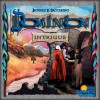


























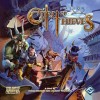















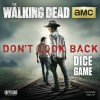


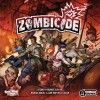




![Go to the Level 7 [escape]: Lockdown page Go to the Level 7 [escape]: Lockdown page](https://boardgaming.com/wp-content/uploads/2013/06/Level-7-Escape-Lockdown-100x100.jpg)


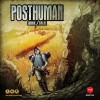

























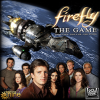



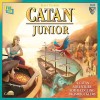




![Go to the Level 7 [Omega Protocol] page Go to the Level 7 [Omega Protocol] page](https://boardgaming.com/wp-content/uploads/2013/06/LEVEL-7-Omega-Protocol--100x100.jpg)
























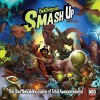



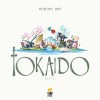

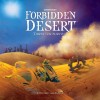
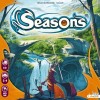





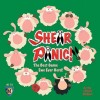

![Go to the Level 7 [escape] page Go to the Level 7 [escape] page](https://boardgaming.com/wp-content/uploads/2012/08/Level-7-escape-100x100.jpg)






















Student Bodies
When you think of high school, do thoughts of bullies and ‘backbiting’ come to mind? Do recollections of the old alma mater cause panic attacks or repressed feeling of failure and frustration? If so, then this game should be a walk down memory lane. It will let you relive the terrors of high school, but in a new light. Though you won’t be relegated to the back table of the cafeteria, you will get pushed around and picked on, but this time you can fight back. There is no group of jocks, eggheads, or popular students. Everyone is on their own and on equal terms. This is everyone for themselves. This is war. This is survival.
Overview: In Student Bodies, you and your classmates have been bitten by the infected students at your school. Your only chance to leave the building the way you entered it is to get to the lab, find the antidote, and be the first to leave. You will, of course, lock the building on your way out. After all, those other students will eventually turn, and it won’t be for the better. Players navigate a hallway of hexagonal spaces that are littered with debris as zombies appear in the doorways. They will attack you, unless you can place your classmates in harm’s way. Don’t worry; they’ll do the same thing to you.
Components: Players and zombies are good quality cardboard standees. The artwork is excellent and cartoonish. A single imprinted custom die will determine the outcome of attacks. The game board is large, sturdy and folds flat. There are 5 character boards that organize your items and monitor your health and stamina. There’s also a deck of fairly durable cards that you will be relying on to give you an advantage over the zombies and your newly bitten classmates. You are also given scenario cards to mix conditions up a bit, but the basic premise is still the same. Several thick cardboard tokens represent obstacles, items, and beaker tokens.
Gameplay: Each player is assigned a character card which will keep track of stamina (actions), health, and possessions. Each player also draws an item to start the game. Items can be weapons with limited uses, armor or abilities. The game is set up with a selected scenario and predetermined difficulty level. Players start at the end of the hall and must navigate obstacles and zombies to get to the science lab. Each turn a player will spawn and move zombies, take their own actions, and replenish their hand of cards. Zombies must move toward the closest player, but in the case of a tie, the play can make a classmate seem more nutritious. Zombies can knock another player down or bite them. Actions by the player’s character include standing up, moving or attacking. A player also has a hand of 5 cards that can be used to aid in the destruction of zombies and other players. At the end of the turn, a player can discard any cards they want and replenish the hand to the full 5 cards. The goal is to get to the lab, find the antidote, and get back out. As zombies are defeated, item markers will arise; but be careful as not all item markers are good. Beaker tokens in the lab can provide the antidote needed for your escape, but not every beaker contains what you’re looking for. Once you have the antidote in hand, high tail it to the exit. Don’t expect an easy escape.
Impressions: In keeping with Smirk and Dagger games, much of this game rests on sacrificing your opponents to pave the way for your success. Expect retaliation. Turn order doesn’t seem to matter. There is a component of luck in the game when it comes to drawing action cards and searching for items and beakers, as well as the roll of the die which determines attack results by characters and zombies. As with most zombie games, once you find the antidote and you’re ready to escape, the school is overrun by zombie students. A slashfest ensues in which only the most daring and fortunate will survive. Defeat can come early in the game if you are not careful, but once a player’s health is gone, they can become smart zombies, and still win the game by being the last player standing. Unfortunately, if you have already found the antidote, you are no longer capable of becoming a zombie and the game ends for you. Being patient and holding the right cards to the end of the game can be the difference between a secondary education or being the second course entre of the zombie horde.
Final Thoughts If you have other zombie games, save your money and get a game of a different genre. The components are well made but an overly aggressive player could disrupt the game board. The artwork is excellent and captions quite amusing. Even without a victory, some battles can be extremely satisfying. If you missed your last class reunion, this game might be the next best thing to being there.